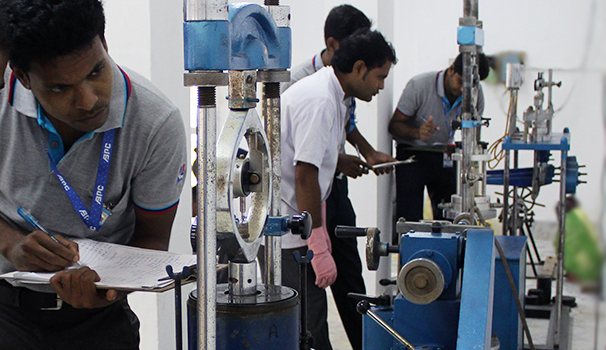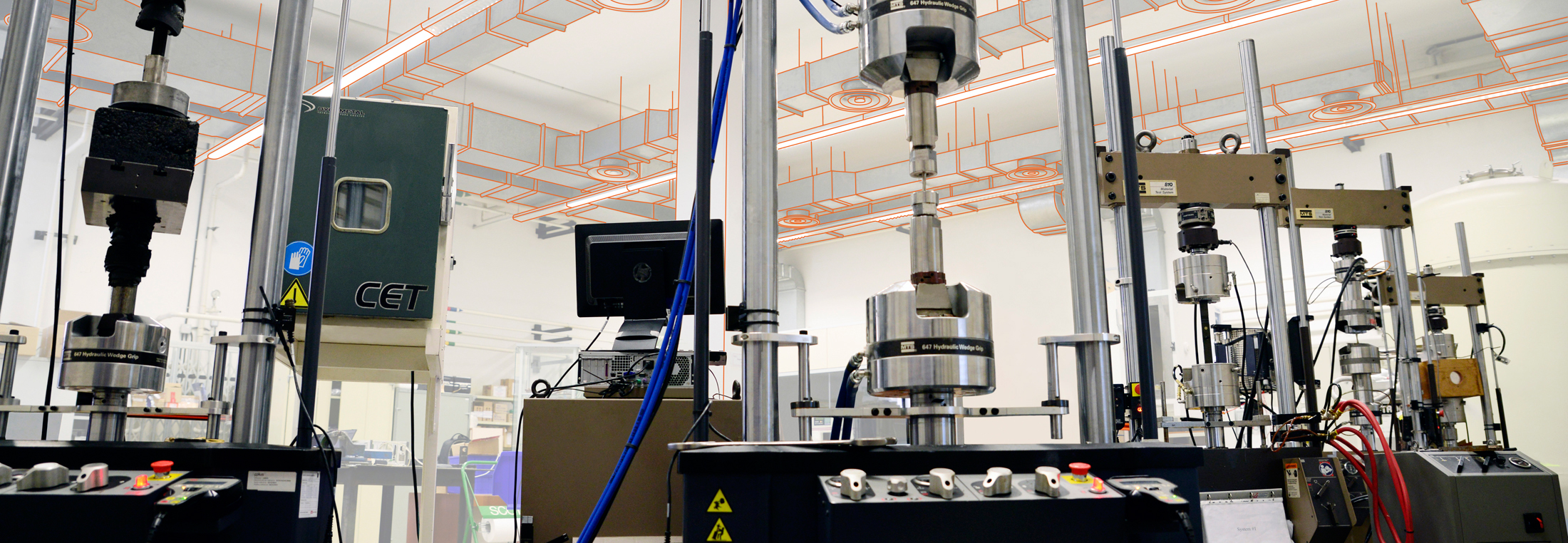Navigate with Confidence: Material Testing Lab Providers for Reliable Results
Wiki Article
Innovations in Material Screening for Unprecedented Efficiency
In today's swiftly advancing world, where technological improvements are improving industries and pushing the boundaries of what was when regarded difficult, the demand for products that can endure extraordinary conditions and deliver extraordinary performance has actually ended up being significantly important. As designers and researchers aim to develop next-generation materials, the capacity to properly test and assess their homes has never ever been more vital. This brings us to the interesting realm of improvements in product testing, where ingenious methods and cutting-edge methods are transforming the way we understand and optimize material efficiency. From non-destructive screening methods to the integration of expert system, the possibilities seem limitless. Allow us begin on this trip of expedition, as we uncover the remarkable improvements in material testing and their prospective to form the future of numerous markets.Non-Destructive Testing Techniques
Non-destructive testing strategies are necessary for examining the honesty and dependability of products without creating any type of damages. These strategies play a vital function in numerous sectors, consisting of aerospace, automotive, building and construction, and production. By using non-destructive screening techniques, engineers can analyze the residential properties and attributes of materials, guaranteeing that they meet the needed requirements and specifications.
An additional widely used method is magnetic particle testing (MT), which is largely made use of for discovering surface and near-surface defects in ferromagnetic materials. By applying a magnetic area to the material and after that presenting magnetic bits, any type of flaws offer can be easily determined. MT is particularly reliable for detecting cracks, lack of blend, and various other surface abnormalities.
Advanced Products Characterization Methods
Advanced materials characterization methods are necessary devices for evaluating the properties and efficiency of materials in different industries. These techniques entail the usage of innovative techniques to assess and comprehend the microstructure, composition, and behavior of products at the molecular and atomic levels. By using advanced characterization engineers, researchers and approaches can obtain beneficial insights into the architectural integrity, mechanical residential properties, thermal stability, and chemical sensitivity of products.One commonly utilized approach is scanning electron microscopy (SEM), which supplies high-resolution photos of a product's surface area. An additional important strategy is X-ray diffraction (XRD), which provides info about the crystal framework and stage structure of materials.
Additionally, transmission electron microscopy (TEM) enables researchers to observe the internal structure of materials with atomic resolution. TEM can exposing information such as grain problems, dislocations, and boundaries, offering crucial details concerning a material's mechanical buildings - material testing lab. Additionally, spectroscopic methods like Fourier-transform infrared spectroscopy (FTIR) and Raman spectroscopy can be used to analyze the chemical composition, molecular framework, and vibrational modes of products
High-Temperature and Extreme Environment Screening
In order to assess the efficiency of products in severe and high-temperature atmospheres, strenuous testing techniques are necessary. These screening techniques are developed to imitate the problems that products may encounter in real-life applications, such as aerospace, automotive, and power industries. Extreme and high-temperature environment screening intends to analyze the actions of materials under extreme warmth, stress, and various other difficult problems.One commonly utilized strategy for high-temperature screening is thermal analysis. This approach entails subjecting the product to varying temperatures while determining its thermal residential or commercial properties, read the full info here such as thermal expansion, warm ability, and thermal conductivity. By analyzing these residential or commercial properties, researchers can determine exactly how the product will certainly act under various temperature problems, enabling them to pick the most ideal products for certain applications.
An additional crucial element of severe and high-temperature atmosphere screening is mechanical screening. This involves subjecting the product to mechanical stress at elevated temperatures, simulating the conditions it may experience in real-world applications. Mechanical testing helps examine the material's resistance, ductility, and stamina to deformation and failing under extreme and high-temperature conditions.
Moreover, ecological testing is critical to assess the material's performance in harsh conditions, such as corrosive settings or exposure to extreme weather conditions. This screening involves subjecting the product to various environmental aspects, such as moisture, salt spray, and UV radiation, to assess its durability YOURURL.com and resistance to corrosion and degradation.

Simulation and Modeling for Product Efficiency
Simulation and modeling play an essential duty in understanding and anticipating the efficiency of products in different applications. With innovations in computational capacities, researchers and designers can currently model the habits and replicate of materials under different conditions, providing useful insights right into their efficiency and helping in the advancement of new products with boosted residential or commercial properties.Through simulation and modeling, researchers can examine the tiny and macroscopic habits of materials, including their mechanical, thermal, and electric residential or commercial properties. This permits them to forecast how products will certainly act under different loads, temperature levels, and ecological conditions, without the requirement for time-consuming and costly experimental screening.
Simulation and modeling techniques additionally enable researchers to enhance material layouts and determine potential weaknesses or failure points. By studying the product's action to different pressures and stimulations, designers can make informed choices concerning material choice and style alterations to enhance efficiency and resilience.
In addition, simulation and modeling can aid in the advancement of products for specific applications. For instance, in the aerospace market, scientists can imitate the actions of products under severe temperatures and stress to develop lightweight yet solid products for airplane frameworks (material testing lab). In the clinical area, simulation techniques can be used to research the communications between products and biological tissues, causing the advancement of biocompatible products for implants or drug shipment systems
Combination of Artificial Knowledge in Material Testing
The incorporation of Expert system (AI) into material screening has reinvented the field, making it possible for researchers to achieve unmatched accuracy and effectiveness in examining material performance. AI algorithms can refine and examine big amounts of information, identifying patterns and relationships that might not be promptly noticeable to human researchers. This permits for more thorough and precise testing, leading to a deeper understanding of product actions.One application of AI in product screening visit is in the advancement of predictive versions. By educating AI algorithms on vast datasets of material residential or commercial properties and efficiency, scientists can develop designs that can precisely predict the actions of brand-new products under numerous problems. This can significantly speed up the material growth process, as it permits researchers to screen and focus on products with preferred properties.
In addition to predictive modeling, AI can also be made use of to optimize testing treatments. By examining historical screening information, AI formulas can identify one of the most effective and informative tests to perform, reducing the moment and sources required for material assessment.
Furthermore, AI can assist in the recognition of abnormalities or flaws in products. By contrasting test results versus expected end results, AI algorithms can identify discrepancies and sharp scientists to possible problems. This can assist improve quality assurance processes and ensure using products that meet the required specifications.
Verdict

By assessing these properties, researchers can figure out exactly how the product will certainly act under various temperature level conditions, enabling them to select the most suitable products for certain applications.
The incorporation of Artificial Intelligence (AI) into material testing has actually revolutionized the field, making it possible for scientists to accomplish unmatched precision and performance in evaluating material performance.In verdict, developments in product screening methods, characterization techniques, high-temperature and severe setting screening, and the combination of synthetic intelligence have actually substantially added to the growth of extraordinary performance in products. These improvements have permitted for the recognition of product residential or commercial properties and behaviors, enabling the style and optimization of materials for different applications. material testing lab. With more study and technical improvements, material screening will certainly proceed to play an important role in pushing the borders of product efficiency
Report this wiki page